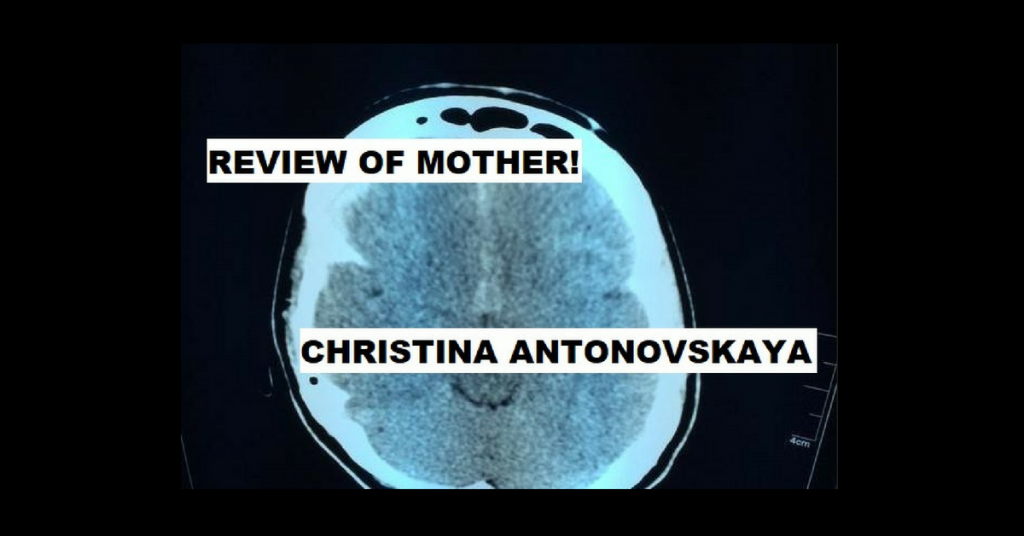(Warning: spoilers)
We were looking for the room at Champagne Centre for the appointment, and I found a pin on the ground that has “I feel it all” written on it and an image of a woman smoking printed on it. I took it and put it in the left pocket of my pea coat and will probably keep it there. This quote resonates with me and also with the themes of the script and film.
Impurity, more exact, the myth of pureness is depicted through Mother’s character with physiology, vicarious causation of surroundings, and the creator of Mother himself, as when Woman subtly hints that she is young enough to be his daughter. Mother has no choice but to be directly affected, as she is the house and the house is her, and whatever happens to one also happens to the other. She becomes “tainted” as the disciples enter. Meanwhile, Man and Woman both contribute as Man/mankind is literally dying and Woman is menacing with her unruly behaviour and minimal appreciation of consequences.
Labour of care and emotions as compassion
Even though Mother is selfless, this emotional labour is not necessarily reciprocated, and instead is diminished by the human desires associated with selfishness and money. Mother is unable to really relate to the motifs of the Sons at the level of resentment they feel towards each other due to problems caused by these same weaknesses of human nature. Yet, it still pains her to watch what happens. Mother is humane, but not really a human like them or us.
Nobody else is as connected to the house as she is, and while there are moments that lead up to immense pain and suffering, she is not at fault for it. Mother, much like real mothers and women do, committed to sacrifices and experienced significant loss.
The current climate
Current events within the year proved hubris of our need to invade the natural environment for our own purposes; government allowance of creating more infrastructure and development of oil and gas rigs and excavation, digging into the earth, minimizing nature’s resources more and more, and scientific “progress” that has questionable or uncertain consequences. Biblical allegories as warnings, or else history will repeat itself, and now it is us having to face it if we don’t pay attention.
Reference is made to Mother also as the subservient role of housewives, girlfriends, or any woman that finds herself in this situation today at the expense of men and others that are dependent on them. The “m” is lowercase. The earth and humans are in a directly codependent relationship in reality, and it is just as portrayed by Aronofsky that at some points, it actually is that destructive and unnerving, although within the context of the script it seems as though it was taken a step too far.
When the house, or earth, suffers, we all suffer vicariously through what nature has to endure, and this is a negative feedback loop that is difficult to break. Not until complete chaos and death, does that cycle break, and after even the child of Mother dies also. In the midst of the destruction and war in their house, the symbolic notion of the tower being built and things taking shape, reflective of society’s structuralism, and that it has taken its place there even under such dire circumstances.
What remains, and always will, is the spirit of womanhood, or particularly motherhood, as a seemingly pure crystalloid energy that is able to withstand all of the damages. While this is empowering, it still feels fiction-based, and sidelined from feminism that is relatable or current. Mother had indeed been killed, mercilessly, not just suffered “an assault” as Lawrence stated, and for no cause but reprise or rebirth into a new beginning. Again, this is at the expense of Him, undeniably the main man and mastermind behind all that has happened in the first place.
The story begins with Him being almost indifferent and struggling to find purpose of himself, as a writer, husband, and himself, almost as if to suggest that of course, being Him, this isn’t necessary for Him. However, tables turn by the end, and the one in full command of Mother and her fate is Him, as power dynamics are consistently evident to not be on Mother’s side, everything from who they welcome into their home to if they have sex or not. It is even difficult for Him to deny his disciples what they wanted, and then to make them leave Him and Mother alone as their force violated Mother, their home, and even turned on each other, as allegorical to the backlash of human destruction as creation.
Ogling the piece as an entity apart from the film almost feels like looking at a secret process. This could be of my cherished experiences with original scripts; this one and the Alice in Wonderland (1983 playwright’s edition, one of my best possessions and was attained mysteriously). It brings something to the reader much different from a viewing experience. This was a glimpse into Aronofsky’s honest stream of consciousness, or as close as we will get to it. Photos from the scenes are embedded in the screenplay, including some of the most grueling moments. Surrounded by destruction, these characters all exude their own livelihood and creation. Even though the film is focused on Mother’s perspective, the story is just as much about her as it is about Him. The rebirth is equally theirs, as they both are forced to start anew.
Hollywood, CA, Paramount Guilds, 2017 Paramount Pictures Corporation. Screenplay by Darren Aronofsky.

